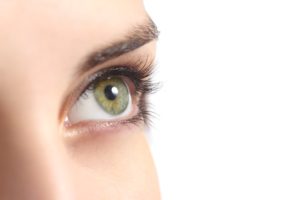Posted by: Georgia Eye Physicians and Surgeons in Latest News
Much like the eyes themselves, eyebrows and eyelashes are easy to take for granted. Unlike the eyes, however, these strangely placed hairs don’t serve a function that’s immediately obvious to many people. Over the past 200 millennia, humans have been losing hair all over our bodies, seemingly shedding that feature as it’s become decreasingly useful. It stands to reason, therefore, that the body hair we’ve retained serves some sort of purpose. It turns out that our eyebrows & eyelashes are important physical features for the eyes’ wellbeing, and our eyebrows serve important interpersonal functions. For this week’s blog, we’re answering an often-asked question: what does science tell us about the purpose of eyebrows and eyelashes?

Eyelashes may serve a function similar to that of your cat’s whiskers. In addition to catching dust that may irritate or damage the eyes, they also sense wind and objects nearing the eyes, causing us to reflexively blink. Considering how much of our evolutionary history has been spent outdoors, these types of features likely developed because of their ability to keep windborne dirt, falling debris, and insects out of our eyes. Eyelashes also significantly reduce tear evaporation, and sufficiently lubricated eyes are crucial to eye health.
Our eyebrows may have originally evolved to keep our eyes healthy and safe, but we’ve also adapted them as useful communication tools. Much of human communication is nonverbal, and our eyes and eyebrows can communicate a wide variety of signals and emotions. Anger, surprise, pain, happiness, and a whole host of other emotions can be expressed and exaggerated with the brow. This benefit of eyebrows may also have served an evolutionary advantage, allowing people with expressive eyes to communicate their needs to others before the development of spoken language.
While the eyelashes do a lot to help us communicate and keep our eyes healthy, they can also be the source of several eye-health problems. Styes, blepharitis, trichiasis, and distichiasis are all conditions caused by issues related to the eyelashes or their follicles. If you’re experiencing any eye-health problems or concerns, or you’d like to schedule a routine or comprehensive medical eye exam, contact Dr. William Segal or Dr. Marc Lay at Georgia Eye Physicians & Surgeons today to make an appointment. Be sure to follow us on Facebook and Twitter for more tips, points of interest, and news.

